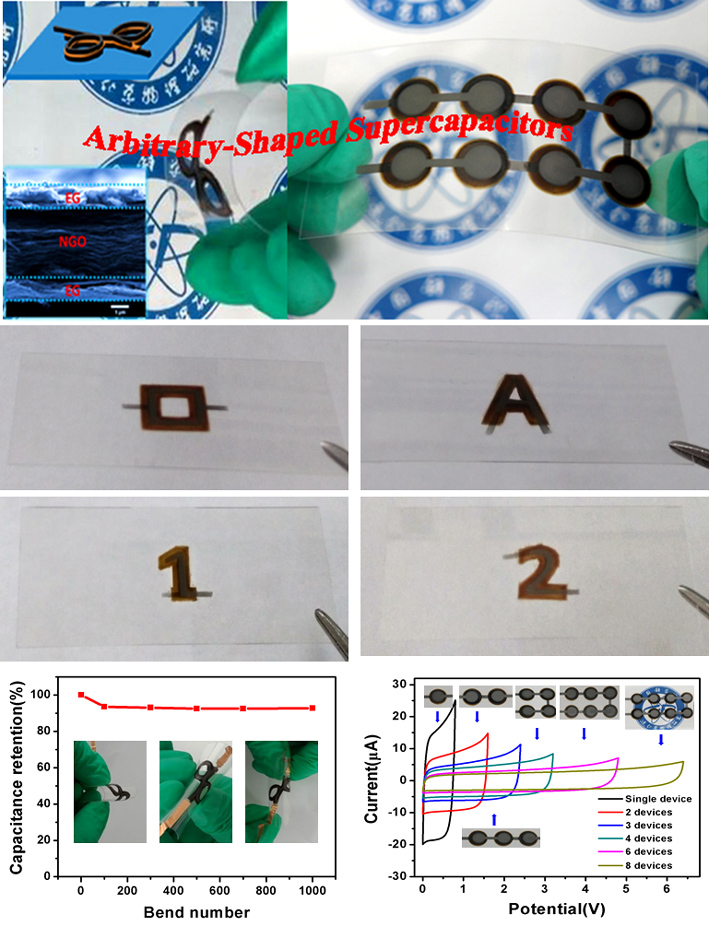
Abstract
The emerging smart power source-unitized electronics represent an utmost innovative paradigm requiring dramatic alteration from materials to device assembly and integration. However, traditional power sources with huge bottlenecks on the design and performance cannot keep pace with the revolutionized progress of shape-confirmable integrated circuits. Herein, we demonstrate the scalable fabrication of arbitrary-shaped printable graphene-based planar sandwich supercapacitors (denoted as PG-PSSs) with excellent performance, excellent flexibility, innovative versatility, and superior integration, based on a monolithic layer-structured film of fully printed, electrochemically exfoliated graphene (EG) as two electrodes and nanosized graphene oxide (NGO, lateral size of 100 nm) as a separator on one single substrate. The PG-PSSs possess designable geometries and multiple functionalities far beyond those attainable by conventional supercapacitor technologies. First of all, the printable technique allows us for the simplified mass production of planar sandwich supercapacitors with arbitrary-shape, e.g., rectangle, hollow-square, A letter, 1 and 2 numbers, circle, and even complicated junction-wire shape. Second, the diversity of graphene materials provided a platform for constructing monolithic PG-PSSs, showing exceptional areal capacitance of 6.6 mF cm-2 and volumetric capacitance of 94 F cm-3 that are superior to conventional flexible supercapacitors. Further, volumetric capacitance of ~280 F cm-3 can be substantially enhanced when a redox electrolyte (e.g., hydroquinone) was introduced into the film electrodes. Third, the versatile-shaped PG-PSSs exhibited excellent flexibility, very stable performance without capacitance degradation under different bending states, and excellent cycling stability, e.g., 93% of capacitance retention for rectangle-shaped PG-PSSs after 10000 cycles. Importantly, the output capacitance of our devices can be easily modulated by covering gel electrolyte on the selected area of the electrode film. In addition, such arbitrary-shaped PG-PSSs can be readily interconnected in parallel and series to produce modular power sources for designable integrated circuits with exceptional shape conformability and high output current and voltage.